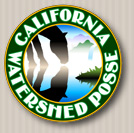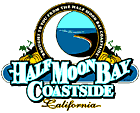

Confined Animal Regulations Ordinance
May 23, 2001
To:San Mateo County Planning Commission & Board of Supervisors
From: Oscar Braun, Captain California Watershed Posse
Subject: Confined Animal Regulations Ordinance
Purpose: Protect water quality, environmentally sensitive habitats, livestock , the
agricultural interests the state, and the publics health and safety.
The Save Our Bay Foundation in 1995 became San Mateo County's most active participant of the Water Quality Protection Program (WQPP) of the National Oceanic and Atmospheric Administration. The WQPP is a coalition of twenty-seven federal, state and local agencies, public groups, representatives of the agricultural, boating, equestrian communities, and businesses working to develop and carry out a long-term, proactive water quality management plan for the Sanctuary's eleven watershed regions. The program's goals are to address existing water quality concerns and to prevent the kinds of expensive water pollution crises that have occurred elsewhere in the county. California Watershed Posse monitors, identifies and fights to stop the destructive and polluting activities of private and public entities impacting the Peninsula watershed and San Francisco Bay.
The Peninsula watershed produces, collects and stores high quality drinking water for 2.4 million Bay Area residents and is a heaven for a variety of habitats and supports the ``highest concentration" of rare, threatened and endangered species in the Bay Area. The Clean Water Act and the Endangered Species Act are Federal environmental regulatory statutes that are meant to protect and sustain our communities and sensitive and crucial natural resources. A violation of these Acts disqualifies the violating County from being granted Federal and State permits or funding.
San Mateo County has currently four commercial/industrial operations that violate the Clean Water Act and the Endangered Species Act.. Commercial/industrial operators are Shamrock Ranch, Wildlife Associates, Half Moon Bay Sealing & Paving and Johnston Ranch landfill. The County of San Mateo Planning Commission has found, based on the advice of the Planning Administrator and the Committee for Green Foothills, that these four commercial/industrial operators activities in statutory delineated critical environmentally sensitive habitats qualify as a non-residential use accessory to agriculture and permitted by right in the Planned Agricultural District on either prime or non-prime soils.
In Spring of 1997, the Shamrock Ranch stable owners were notified that tenant Wildlife Associates must vacant Shamrock Ranch because they cannot house their ``exotic Detrimental species" on statutory delineated critical habitat areas containing endangered species. The Legislature finds and declares ``exotic Detrimental species `` are listed because they pose a treat to native wildlife, the agricultural interest of the sate and the publics health and safety. ". The State ONLY requires a permit for wild Detrimental species and specifically states: ``Family Equidae is not prohibited and is exempt from permit requirements. No permits required for horses, cattle, yak, sheep, goat, swine, Llama, Alpaca, or hybrids of llama, alpaca and guanacos.
SOB Posse Findings and Confined Animal Proposal:
 |
|
the Half Moon Bay Coastside Foundation's |
|
California Watershed Posse |
|
YOUR MISSION | CRMP SERVICES | CWP PROJECTS | CWP LINKS | THE PEBBLE |
|
1589 Higgins Canyon Road Half Moon Bay, California. 94019 |
|
| |||||||||||||||||||||||||||||||||||||||||||||||||||||




